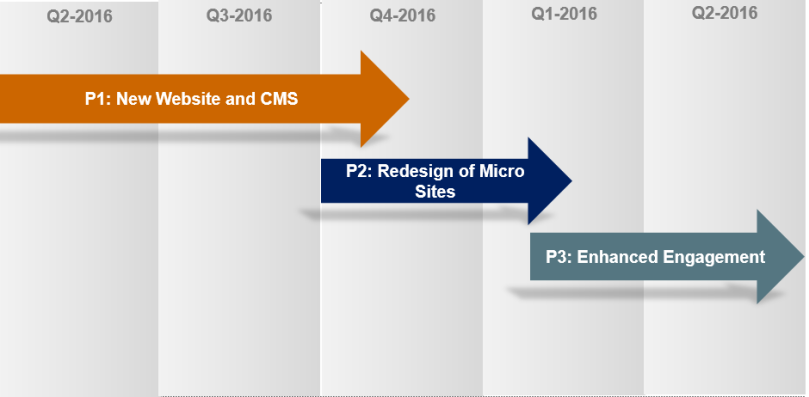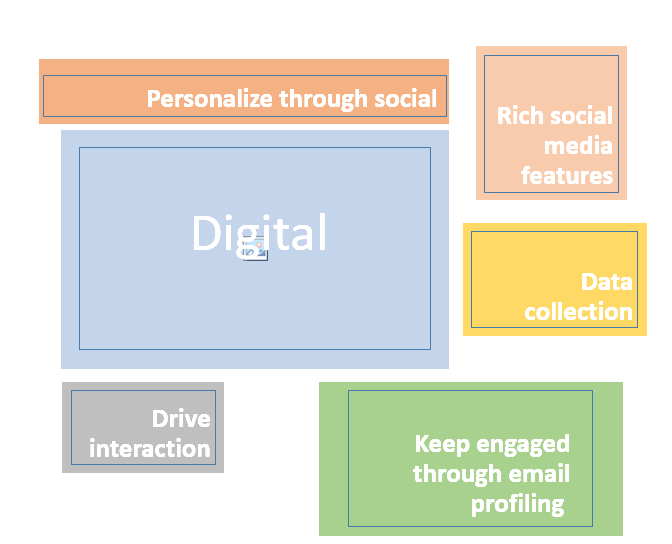Digital Strategy – Digital Roadmap
We would discuss about on how to work on digital roadmap for any website.
We think of following areas.
Roadmap Approach
The following drivers shape decisions around the functionality and order of the deployment phases within the roadmap.
- Timely Results
-
- Deliver grouped capabilities within reasonable stakeholder expectations
- Deliver capabilities on a regular basis in a phased approach to demonstrate forward movement
- Priority Alignment
-
- Focus on foundational aspects of the overall platform first
- The capabilities delivered within the phases are aligned with the priorities of the stakeholders
- Manageable Effort
-
- Take a crawl, walk, then run, approach to delivery
- Account for the fact that the education and adoption of technologies takes time
Roadmap Phases
Prepare phases in which the site will be implemented. Each phase has core purpose that is encapsulated by a theme. So take example of few phases.
P1: New Website based on Sitecore CMS
Decided on features for Sitecore CMS like follows:
- Website redesign focused on creating an innovative, differentiated experience
- New content management system to support new requirements & technologies
- Enhanced Search Capabilities and Content Architecture
- Basic Personalization*
P2: Redesign of Micro sites
- An extension of the first of phase 1
- Roll-out the redesign to regions
- Enable Personalization for micro sites
P3: Enhanced Engagement
- Deeper two-way dialog with prospects, customers and partners
- Enhanced Marketing Automation & CRM Integration
- Launch of Social Media forum and Leader Board
Roadmap Timelines
Provide your customer with timelines for roadmap. Take follow as example.

